Kia Stonic 1.0 T-GDi 218 | 10 | 2017Scotcars rating
Kia may be late to the small SUV party, but it's ready to burst balloons with its super Stonic
THIS IS THE new Kia Stonic. I know, it’s rather stating the obvious, but there’s a reason: you’d better get used to the Stonic, because I think you’re going to see a lot of Kia’s little SUV on the road. (Related: Roadtest — Kia Picanto 1.25 GT-Line)
First things first: ‘little’ SUVs. In industry-speak, the new Stonic slots into what is called the B-segment, a sector currently dominated by the Nissan Juke; the car which, essentially, created the B-SUV market.
It’s now a massively important sector for all manufacturers. In Europe, it currently accounts for 1.1 million annual sales. That’s set to double by 2020. So you can see why, despite being rather late to the party, Kia has launched Stonic.
Based on the Kia Picanto, Stonic is slightly longer at 4140mm. It’s also 70mm taller and rides 42mm higher from the ground to give it a clear SUV stance. While the two cars share some mechanical components, Stonic has a bespoke body and interior.
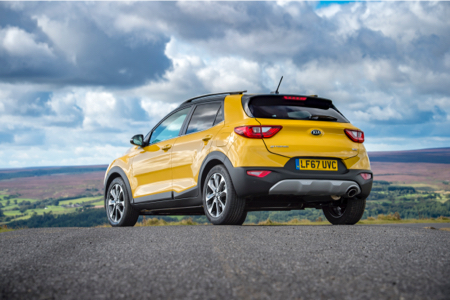
All Stonic models are front-wheel drive as the take-up for all-wheel drive in this sector of the market is only 8%. And while that means 92% of buyers don’t want or need all wheels driven, the higher driving position and chunky looks of small SUVs still appeal to them.
The Stonic is initially available with the choice of three engines: the 1.0-litre T-GDi (Turbocharged Gasoline Direct-injection) unit delivering 118bhp; a 1.4-litre multi-point injection (MPi) naturally aspirated 98bhp petrol engine, and the 108bhp 1.6-litre CRDi turbodiesel from the cee'd range.
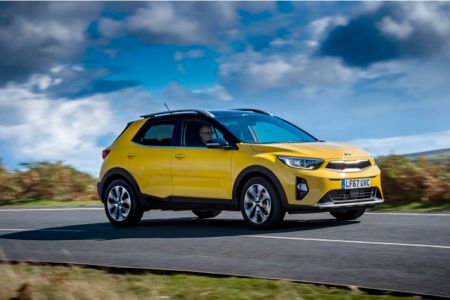
That said, Kia UK bosses have yet to confirm it will actually bring the 1.4 into the country. My gut feeling, having driven both 1.0 petrol and 1.6 diesel, is there’s no need: these two powerplants more than adequately cover the expectations and requirements of the vast majority of potential buyers.
The diesel’s excellent. Smooth in its delivery, and quiet — unless you have a daft turn and decide to treat it like sportscar as the lights turn green — it covers 0-62mph in 10.9secs, emits 109g/km CO2 and returns 67.3mpg. If you need to cover long distances on motorways, this is your choice.
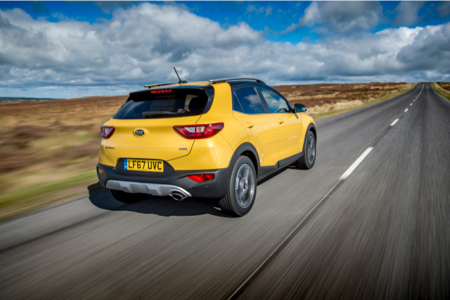
But the best of the bunch is the sprightly 1.0 three-cylinder petrol which will account for more than 60% of sales in the UK. And I have to say, it’s a blast, and will have you smiling even simply at the thought of driving it. Seriously; it’s that much fun.
Its 118bhp makes it the most powerful in the range, and while nothing meaningful happens until 2500rpm when the turbocharger kicks in, more importantly it’s a delight if you’re simply pootling around the town doing your daily chores.
And let’s be honest, that’s the life the bulk of Stonics will enjoy. In essence, it’s a super-sized supermini.
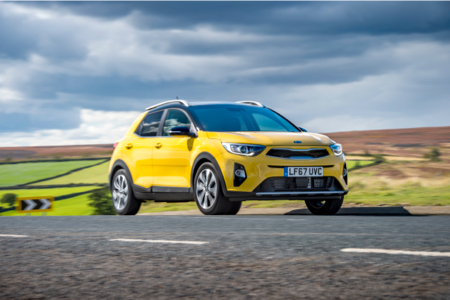
Access through all four doors is excellent, and I could sit comfortably in the rear seat — with more than acceptable head and legroom — behind my driving position: and I’m 5ft 8in. Ok, six-footers might struggle, but it’s horses for courses. In the end, you buy the car which fits you. Bootspace is also more than generous for a car in this sector.
Stonic is available in two trim levels — ‘2’ and First Edition — in the UK, with prices starting at £16,995 for the ‘2’ 1.0 T-GDI 118bhp, and rising to £20,495 for the range-topping First Edition 1.6CRDi 108bhp. All models are mated to a six-speed manual gearbox. An auto will join the 1.0 petrol range next summer.
There’s a £2700 difference between the entry-level ‘2’ petrol and the First Edition 1.0: is it worth splashing out the extra dosh? I think so.
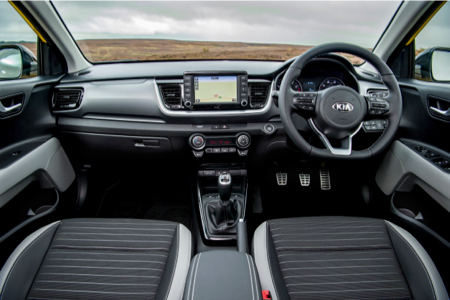
Worth highlight initially that Electronic Stability Control (ESC) and Vehicle Stability Management (VSM) are standard on both models. VSM is linked to Torque Vectoring, Straight Line Stability and Cornering Brake Control to help the driver maintain control in bad weather or on poorly surfaced roads. All versions also have Hill-start Assist to prevent the car from rolling backwards when setting off on steep inclines.
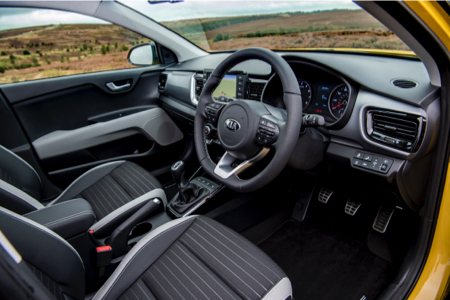
Elsewhere, the ‘2’ is well specced, including a 7.0-inch display with a DAB radio and MP3 compatibility, plus 17in alloys, air conditioning, all-round electric windows with an automatic function on the driver's side, roof rails, rear parking sensors, remote locking, and electrically adjustable heated door mirrors.
There’s also a 3.5-inch supervision cluster, Bluetooth with music streaming, automatic headlight control, bi-function projection headlamps and cornering lights and LED daytime running lights, plus body-coloured bumpers, door mirror casings and door handles, steering wheel-mounted audio controls, 60:40 split rear seats and a six-speaker audio system.
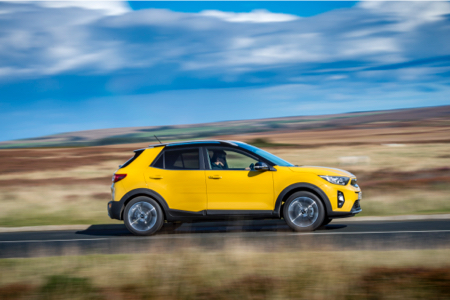
But when it comes to additional safety equipment, the First Edition is the one to go for. Autonomous Emergency Braking and Lane Departure Warning are standard in the First Edition, but optional on grade 2 as part of an Advanced Driving Assistance Pack (ADAP).
The Lane Departure Warning System is linked to Driver Attention Warning, which can alert a drowsy or distracted driver that it is time to take a break, and High Beam Assist, which automatically switches the car between dipped and full beam according to the traffic around it and the local street lighting.
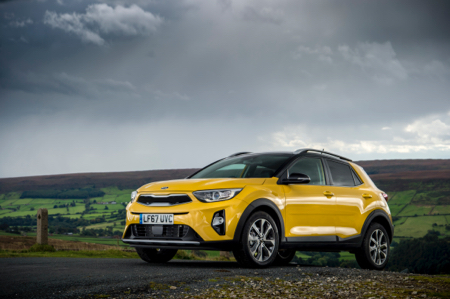
The First Edition also has Blind Spot Detection with Rear Cross Traffic Alert, to prevent the car from being driven into the path of a vehicle approaching from an angle out of the driver's eye-line.
In the First Edition there’s also an upgraded 7.0-inch touchscreen navigation and infotainment system featuring Kia Connected Services with TomTom. Android Auto and Apple CarPlay smartphone integration are standard across the range.
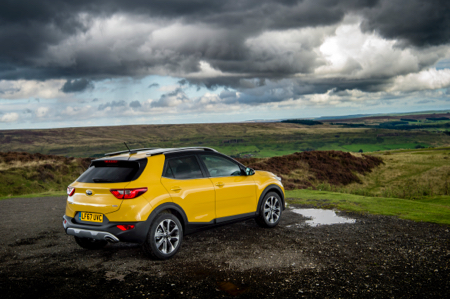
But First Edition adds a smart key entry system and engine start/stop button, stainless steel pedals, black cloth and grey faux leather upholstery with colour accents, automatic air conditioning, LED rear lights, privacy glass on the rear side windows and tailgate, heated front seats and D-shaped steering wheel, chrome window trim and interior door handles and a dual-height luggage floor.
There’s also a range of striking colour combos. The standard paint colour is Sienna Brown, with a black roof on the First Edition.
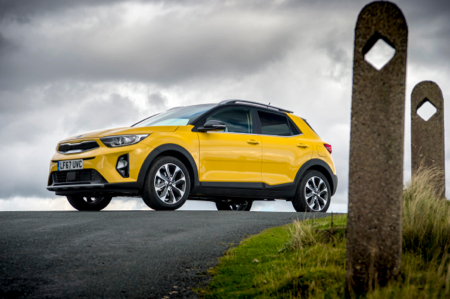
Clear White, Blaze Red, Graphite and Midnight Black are options on grade 2, while First Edition versions can be ordered in Clear White, Blaze Red and Zest Yellow, all with a black roof; Midnight Black with a red roof; Graphite with a lime green roof; and Urban Grey and Satin Silver with an orange roof.
As I said earlier, Kia may have been slow getting to the B-SUV party, but I have a feeling the Stonic could be about to burst the balloons of a number of other manufacturers. Kia expects to sell between 8000-10,000 Stonics in its first full year. Don’t be surprised if that higher figure increases yet further.
I think it’s a cracking looking car, with oodles of appeal, and I suspect Kia has something of a sales hit on its hands.
Related: Roadtest — Audi Q2 1.4TFSI CoD
Keep up-to-date with all the latest news by following us on twitter.com/Scotcars
Jim McGill
| Quick Stats |
| Price OTR/As Tested |
£16,995 / £16,995 |
| Engine / Power: |
3cyl, 998cc, turbocharged, petrol, 6spd maul / 118bhp |
| How fast?: |
10.3sec / Max 114mph |
| How big/heavy?: |
L4140mm W1760mm H1520mm / 1185kg |
| How thirsty/CO2?: |
56.5mpg / 115g/km CO2 |
| InsGP/Road tax: |
n/a / n/a |
| Alternatives: |
Nissan Juke, Renault Captur, Hyundai Kona, Ford Ecosport |